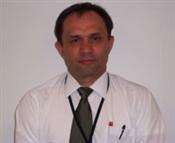Program Information
Intra-Operative Radiotherapy (IORT): Breast and Beyond
S Beddar1*, H Zhang2*, Y Liao3*, J Turian3*, (1) UT MD Anderson Cancer Center, Houston, TX, (2) Northwestern Memorial Hospital, Chicago, IL, (3) Rush University Medical Center, Chicago, IL
Presentations
8:30 AM : Intra-Operative Radiation Therapy using Mobile Linear Accelerators - S Beddar, Presenting Author8:45 AM : Introduction to INTRABEAM IORT and QA - H Zhang, Presenting Author
9:00 AM : Balloon Based IORT using Xoft Source - Y Liao, Presenting Author
9:15 AM : Emerging Technologies for IORT: Unidirectional planar brachytherapy sources - J Turian, Presenting Author
WE-B-702-0 (Wednesday, August 2, 2017) 8:30 AM - 9:30 AM Room: 702
Intra-Operative radiation therapy (IORT) has had a long history in cancer management. However, it was not until early 2000’s, IORT has gained momentum in clinical practice. Annual balloon-based electronic brachytherapy (eBT) IORT cases alone have doubled in the past four years according to a recent manufacturer-summarized user report. This educational course will attempt to present a snapshot of the current status of IORT technology, its clinical indications and clinical applications as well as the steps required to introduce some of these technologies into clinical practice. The session will review the existing, clinically active IORT systems, their strengths and limitations as well as their clinical utilization. Emphasis will be placed on electronic brachytherapy, X-ray devices, and electron beam systems. Newly developed technologies, such as directional brachytherapy sources, will be presented and discussed. For each of the systems reviewed, a set of recommendations regarding clinical commissioning, clinical workflow, treatment planning, safety and quality assurance will also be presented.
Learning Objectives:
1. Become familiar with the clinically available IORT systems and their clinical indications.
2. Learn the basics for commissioning, treatment planning, and QA procedures for the most common IORT systems.
3. Identify the strengths and weaknesses of the existing IORT technologies and review new recent technological developments.
Handouts
- 127-35447-418554-126055-1280597098.pdf (S Beddar)
- 127-35448-418554-127642-1235273246.pdf (H Zhang)
- 127-35450-418554-127643.pdf (J Turian)
Contact Email:







